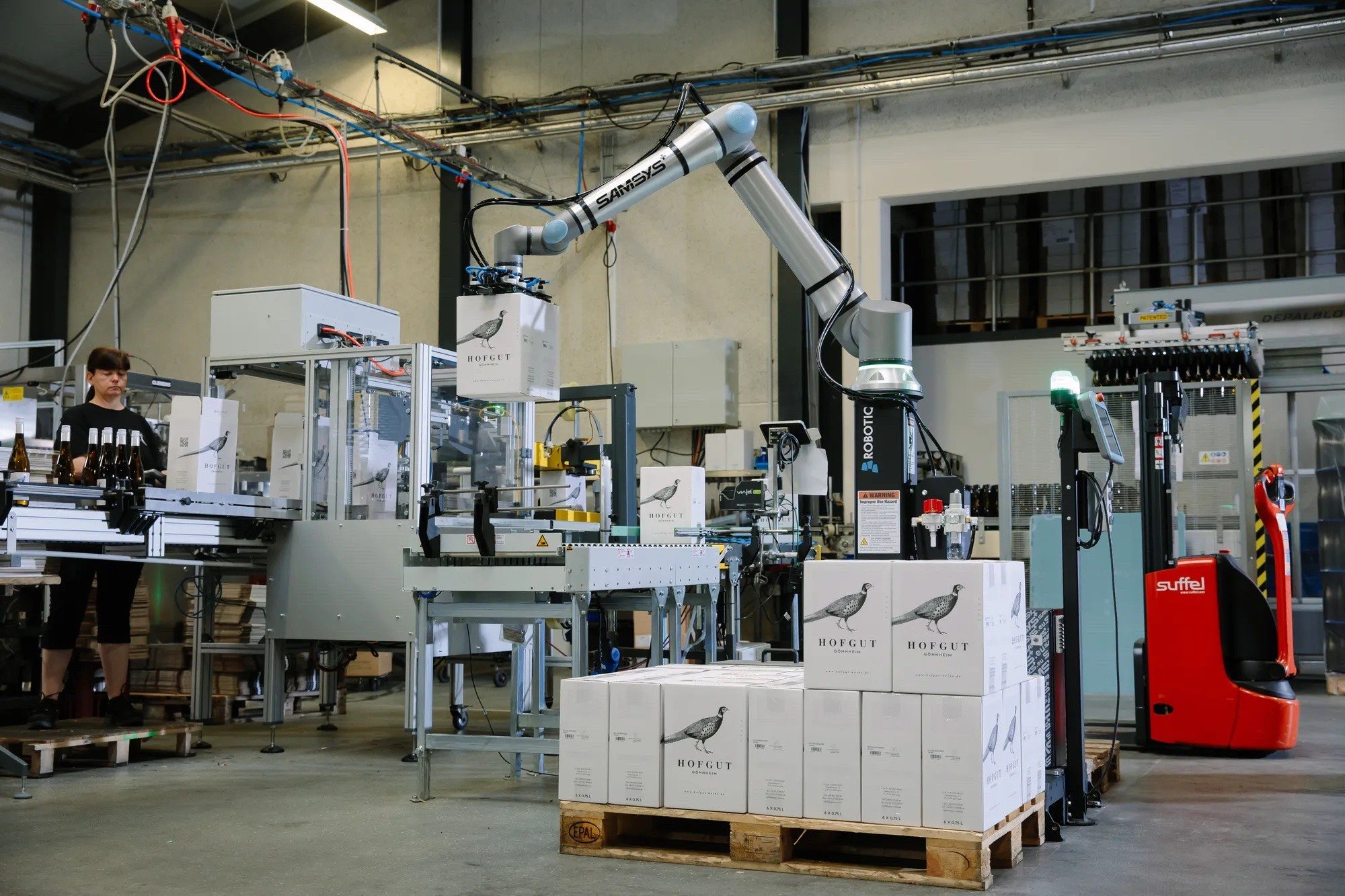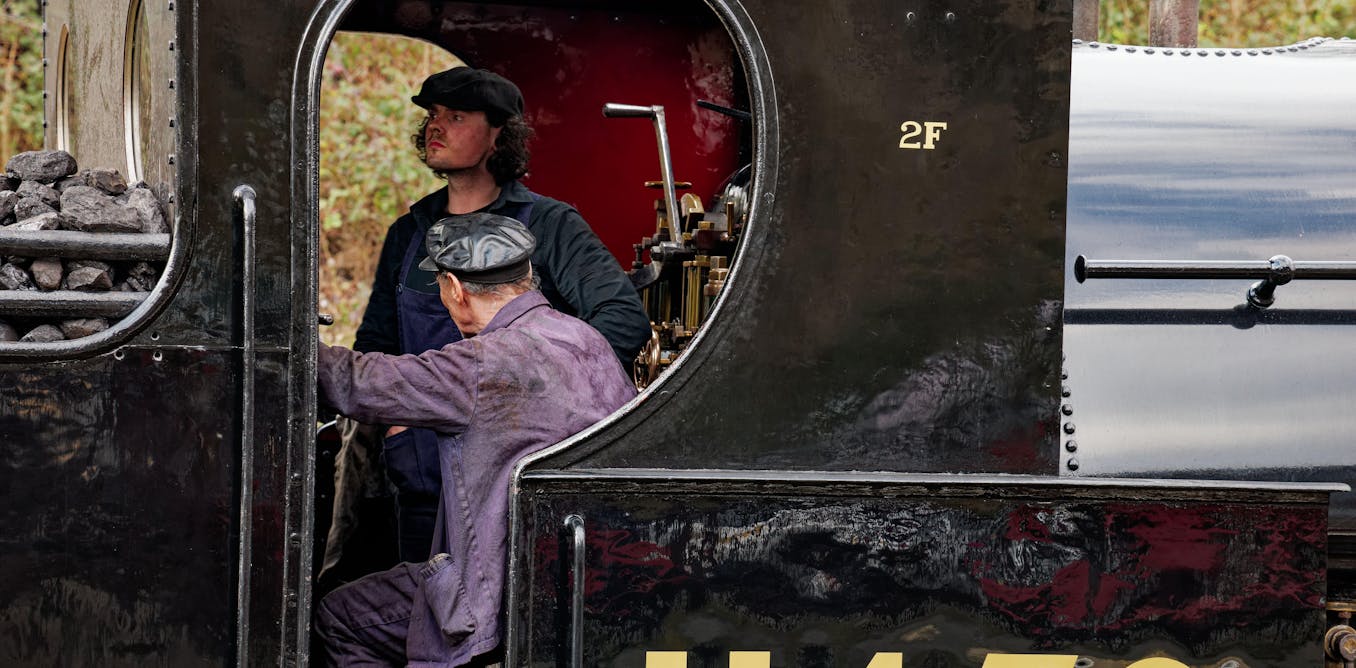Palletizing is the process of stacking products onto pallets for storage or transportation. It can be done manually, where workers pile products by hand. While this method offers flexibility, it is labor-intensive, does not optimize throughput and increase workforce injuries. Alternatively, the palletizing process can be fully automated by using robots. Robotic palletizers can take different formats, where on one side we find massive inline palletizers, which handle high-speed throughput, high-volume and on the other spectrum, cobot arms that provide adaptability to handle different packaging sizes and volumes.
Steps involved in palletizing
Several steps are involved in palletizing, with variables and optional steps depending on the specific requirements. Here are the key steps:
1. Step One: Product Preparation
Ensure products are properly packaged and labeled. This step may include quality checks and sorting items.
2. Step Two: Pallet Selection
Choosing the right pallet is key for the stability, safety, and efficiency of the palletizing, transit and material handling process. Pallets come in wood, plastic, and metal, each with its own specific benefits: wood for strength and affordability, plastic for durability and moisture resistance, and metal for heavy or high-temperature loads. The choice depends on load type, weight and handling needs.
3. Step Three: Arrangement Planning
Efficient pallet layout involves careful planning to optimize space utilization and stability. Cartons are placed with weight distribution and ease of access in mind. Shape, size and packaging are taken into account to determine the best pattern, while facilitating loading and unloading for greater operational efficiency. This step can be carried out with the help of software.
4. Step Four: Stacking and Securing the Load
Carry out the arrangement plan – stack the products on the pallet as planned. Use stretch film to reduce the risk of damage and ensure the safety of handlers during loading and unloading.
5. Step Five: Labeling and Documentation (Optional)
Product labeling and providing documentation is the last palletizing step to enhance transport efficiency, provide regulatory compliance, and product traceability. Pallets are labeled with information like contents, weight, and handling instructions. Additional information can be provided to indicate origin and batch numbers. Marking packaging and supplying product documentation streamline logistics and customs clearance.
6. Step Six: Quality Inspection (Optional)
Conduct a final inspection to ensure the palletized load meets all safety and quality standards.
Advice for Determining Necessary Steps to Palletizing
Consider factors such as product type, transportation method, and material handling requirements to determine which steps are essential to your palletizing process. Consulting an expert can help you tailor the process to your specific needs.
Types of Automated Palletizers
Automated palletizers are increasingly preferred to manual palletizing because of their many advantages. These systems significantly increase productivity by stacking products faster and more efficiently than human workers. In addition to reducing labor costs, they help minimize workplace injuries caused by repetitive movements and lifting. Automated palletizers guarantee greater precision and uniformity in stacking patterns, improving pallet stability and space efficiency. They can operate continuously, helping to increase production output. With technological advances, these systems have become more adaptable, capable of handling a wide range of product types and sizes. For industries facing labor shortages or increasing production demands, automated palletizers offer a reliable, cost-effective solution that improves both operational efficiency and product quality.
There are two main types of automated palletizers:
- Inline Palletizers
Inline palletizers use fixed machinery and conveyor systems to arrange products onto pallets. Products move along conveyors and are directed into layers, which are then stacked onto pallets. Ideal for high-speed, high-volume operations. Typically fully automated, though some models can be semi-automated.
- Robotic Arm Palletizers
Robotic arm palletizers use an automated arm to pick and place products onto pallets. They offer high flexibility and can handle a wide variety of product shapes and sizes. Suitable for industries with diverse product lines or those requiring frequent changeovers. Can be fully automated or semi-automated, depending on the setup and requirements.
Pallets configurations
Pallet configuration refers to the way items are arranged on pallets. It includes data on pallet types and sizes, stacking patterns, layer heights, and the number of cases per pallet and row. The main configuration patterns are as follows:
- Column Stacking
Items are stacked directly on top of each other, maintaining the same footprint up the pallet. This method maximizes stack strength and stability. It works best for lighter or fragile items and may be prone to toppling if stacked too high.
 Brick Stacking
Brick Stacking
Alternates item orientation in each layer, creating a brick-like structure. This approach provides strong, shift-resistant stacks. It allows mixing of box sizes but may reduce the total number of boxes per pallet. Interlocking Patterns
Interlocking Patterns
Uses a rotating footprint where items are supported by multiple boxes below. This method offers superior stability for high-density loads. It provides better bridging strength. Can be more complex to construct. It may create uneven pressure on individual boxes.
Each pattern has its advantages and is chosen based on the specific needs of the material handling, the palletizing process and the logistics requirements. Need help to choose your pallet pattern? Play with the Robotiq configurator tool.
Conclusion
Streamline your palletizing operations with expert advice. Whether you’re new to robotic palletizing or looking to optimize, our experts can assess your needs and recommend solutions. From equipment selection to integration, we’ll help you boost efficiency and reduce costs. Unlock the full potential of your logistics with automated palletizing – contact us today.
![]()

The post “What is Palletizing? Steps, Types & Configurations” by Robotiq Team was published on 10/17/2024 by blog.robotiq.com

The post “Steps, Types, and Configurations ” by GretAi was published on 10/17/2024 by news.gretai.com



























.png?width=975&height=195&name=Hack%20AG%20banner%20(1).png)









Leave a Reply